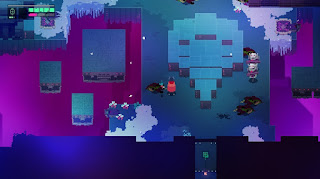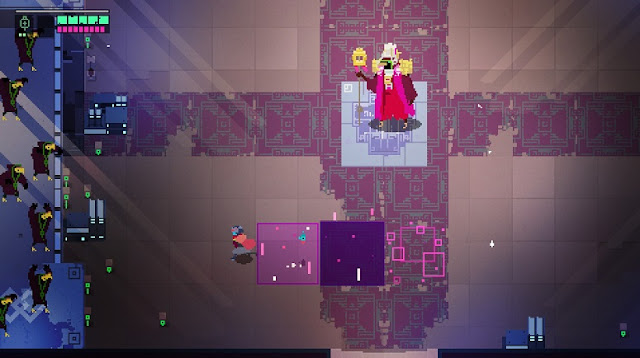When it’s functioning as a full-on squad based FPS, the game is a joy to play as one fights the separatists, barks out orders, and does their bit for the Republic. However, any time that the player is removed from their squad, the game loses something. Thankfully, these moments are far and few between, but when they happen the change comes into sharp focus.
As the name of the game suggests, players take the role of a Republic commando as his team go on a variety of missions. They’re in a unit called Delta Squad, so these guys are elite soldiers, usually being the first sent into a hot spot to establish a foothold for the rest of the Republic’s forces, or being involved in some sort of smaller special forces type of operation. There isn’t much in the way of a story. The game takes place during the events of the prequel movies, so one can see the overlap with events from those. What it feels like more than anything else is an adventure that might as well be called, “A day in the life of Delta Squad”. Under different circumstances, something like this would feel sparse in narrative, but it works here. The squad has its orders and need only concern themselves with executing them. None of this is to say that the story is cold and by the book, however, as there is a lot of banter between everyone while undertaking missions. It adds a humanness to each character, preventing them from becoming cardboard cutouts, and showing that these guys have personalities of their own.
This strong focus on the mission also helps to make the level design in Republic Commando feel more appropriate in the greater context of what’s going on. By the time this game came along, the old ethos of creating sprawling labyrinths to be explored was well on its way out of favor, being replaced by far more linear levels that had players jumping from one scripted event to the next. Sometimes this stripped down approach was difficult to swallow with certain games’ stories not lending themselves well to this type of level design, but it worked here since it so well suited to the systematic nature of the insertion missions that Delta Squad focused on. Sure, there were corridors and passageways conveniently blocked off by debris, but special forces units aren’t about bumbling through a maze, hoping they miraculously stumble across their objectives. They go in with useful intel so that they can get the job done as quickly as possible, and hopefully without incident.
 Working with the squad as they do this is where the game really shines. It’s very straightforward giving orders to its members, lovingly named 07, 40, and 62 by the Republic. On the first level while attacking Genosia, players are slowly introduced to the members and the basics of squad commands. Everyone has separate landing sites, so you start off on your own and the rest of the team slowly join as you progress through the level. All the while, one gradually gets more and more opportunities to plant demolition charges, splice computers, and setup sniping or grenadier positions.
Working with the squad as they do this is where the game really shines. It’s very straightforward giving orders to its members, lovingly named 07, 40, and 62 by the Republic. On the first level while attacking Genosia, players are slowly introduced to the members and the basics of squad commands. Everyone has separate landing sites, so you start off on your own and the rest of the team slowly join as you progress through the level. All the while, one gradually gets more and more opportunities to plant demolition charges, splice computers, and setup sniping or grenadier positions.After a short while, all of these commands go from being quaint to essential as the team’s weapons don’t exactly hit very hard if they’re relying on their rapid fire blasters. It’s very important to assess any situation, and get people sniping and / or tossing grenades, while possibly also pointing out priority targets if a particularly powerful foe attacks. These weapons hit a lot harder and end fights much quicker, preventing the squad from getting overwhelmed. It’s also far more enjoyable taking a lay of the land, spotting optimal spots to snipe from, and learning the most effective ways to deal with enemies. Unfortunately, sniping and grenadier spots are determined by the game itself, with them being made known when your reticule passes over one of them, meaning that players can’t position squad members however they please. It’s not so bad, though, as there are usually a decent number of places where they can set up shop.
Once the game gets going, it’s quite satisfying to bark out orders, clash with tons of droids, Trandoshans, and the like. Things can get hectic in a hurry too with a good dozen or so enemies running around, while some weapon platform unloading on the squad from a distance, and droid dispensers spitting out yet more combatants, all the while trying to provide cover for one of the commandos as they frantically splice into a computer. This is where Republic Command is at its best.
However, as I mentioned earlier, there are times when you aren’t with the squad and things are nowhere near as entertaining. Thankfully, these instances aren’t all that frequent, but when they happen it’s hard not to notice the drop in excitement. Early in the game, it’s all very forgivable as the first few areas are like mini tutorials introducing players its mechanics. Enemies die fast and you aren’t really expecting anything because, well, the game just started. Things take time to ramp up. The problem comes later in that Geonosian assault because things really do ramp up. Droids everywhere. Some rather large and scary. Everyone scrambling to rescue comrades, snipe bugs, and basically doing their best to survive.
Then the second mission starts on a Republic acclamator and the squad each infiltrate the ship from a different area, forcing the player to fly solo for a while. This is where it becomes easy to see just how important the squad mechanics are to enjoying the game, as things taper off considerably until you’re reunited with everyone else. The level of intensity takes a dive as the number of enemies thrown at the player is reduced, which makes sense given that it’s only you and contending with hordes of baddies would have been overwhelming. However, the way enemies attack just isn’t very interesting. It’s usually just small packs of Trandoshans that come running up and are fairly easy to dispatch, especially once you start utilizing the shotguns that they drop.
It’s not very difficult and it’s not much fun either. The only time things get tough is when the game goes for scripted events and just drops enemies on the player out of nowhere which you either react to or die, think “Well, I won’t do that next time…”, get past the obstacle and move on. Exacerbating the matter is that this drags on for too long. It’s a relief once you start finding your squad mates again and can get back to doing more interesting fights, especially by the end of the mission where things really start to pick up, which just shows the contrast all that much more between squad and solo play in the game. The acclamator just feels like a low point in Republic Commando.
That being said, a lot of people still hold the game in high regard. It’s not like you need to run solo very often anyway, and when it comes time to do the final mission on Kashyyyk you’re with your team the vast majority of the time except for a little bit toward the very end. Ultimately, the simple, easy to use squad tactics are very appealing, and nowhere near as in-depth as something like Ghost Recon or Rainbow Six. It gives players the simplest of tastes of running with a group and giving them orders so to complete a mission mixed into the Star Wars universe, and that is plenty good for most people.
There aren’t a huge number of Star Wars first person shooters but when they come along they tend to be well done and Republic Commando lives up to that expectation. It pushes all of the right buttons for fans of the franchise while providing a fun, basic squad-based approach to combat. Sure, going it alone is not quite as fun, but it’s something that can be overlooked for the most part.
One thing that is difficult to overlook, though, is the music for the end credits, which is generic butt rock for some reason. It makes no sense after all that Star Wars music in the game. Why is it there? Weird.
That aside, Republic Commando is one more title to slide into the “Good” shelf of licensed Star Wars games. Even now, several years after its release it’s well worth revisiting. If you’ve never played it before, May 4th is almost here, so maybe now’s the time to try it.





















